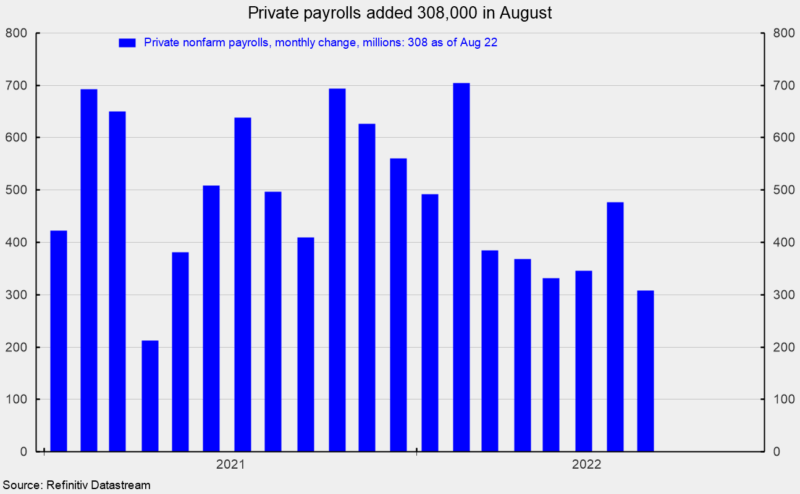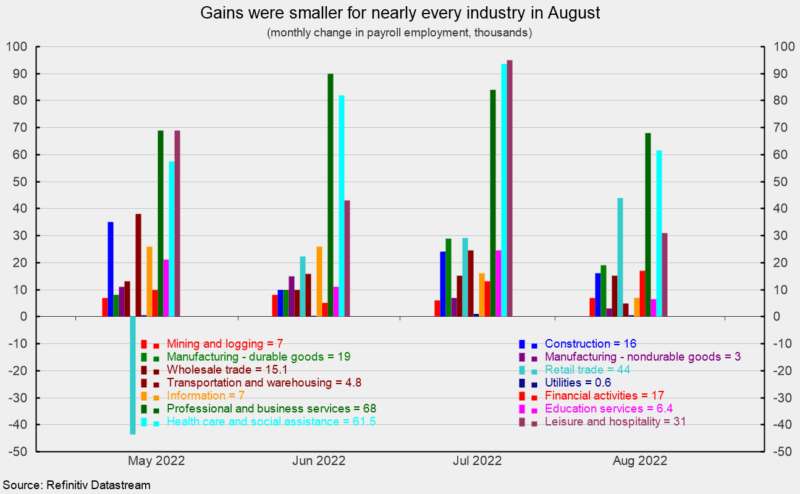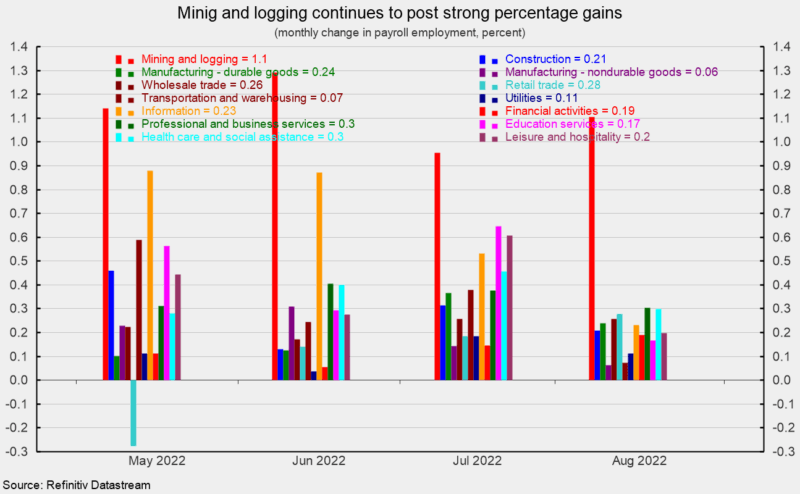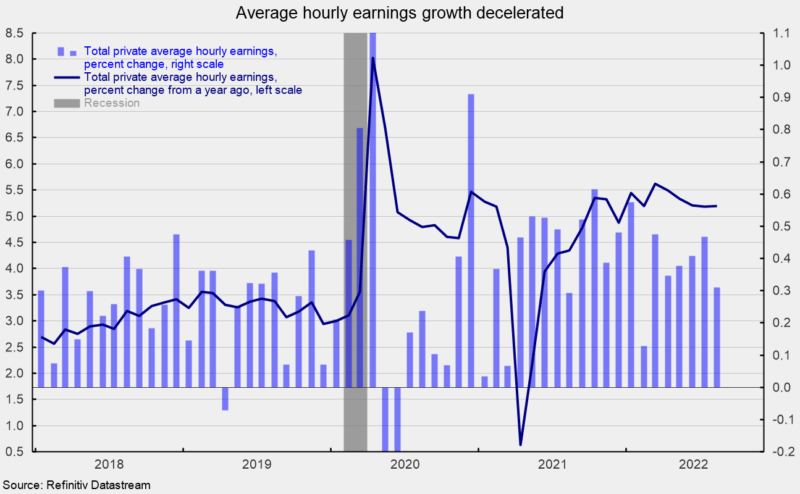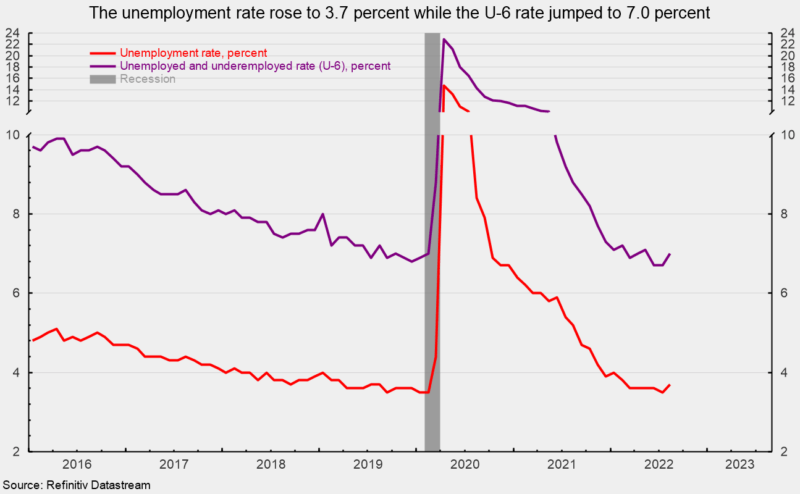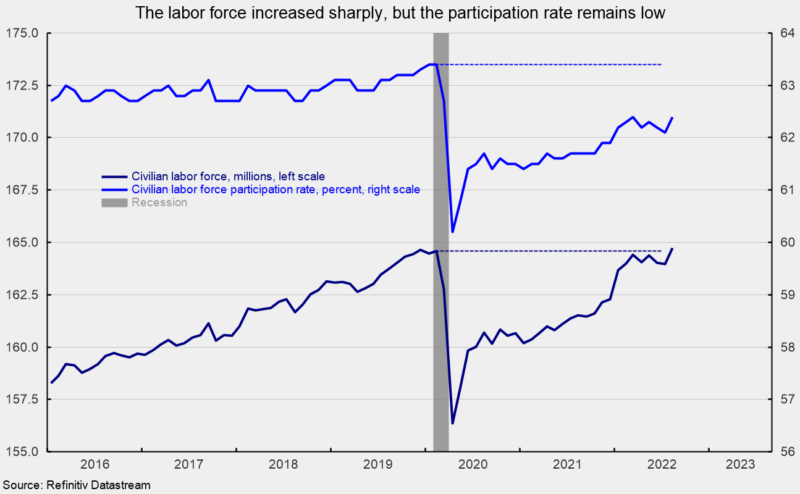Unemployment Rate Jumps and Job Gains Slow in August
U.S. nonfarm payrolls added 315,000 jobs in August, substantially less than the 526,000 gain in July. The July estimate was revised down by 2,000 from the original estimate of 528,000. June was also revised down, now estimated to have increased 293,000, 105,000 less than the previous estimate of 398,000.
Private payrolls posted a 308,000 gain in August, less than the 477,000 gain in July (revised up by 6,000 from 471,000 while June was revised down by 58,000 to 346,000). August was the smallest gain since April 2021 (see first chart).
Gains in August were broad-based, though smaller than recent prior months. Within the 308,000 gain in private payrolls, private services added 263,000 versus a 3-month average of 325,700 while goods-producing industries added 45,000 versus a 3-month average of 51,300.
Within private service-producing industries, education and health services increased by 68,000 (versus a 93,300 three-month average), business and professional services added 68,000 (versus 80,700), retail employment rose by 44,000 (versus 31,800), leisure and hospitality added 31,000 (versus 56,300), wholesale trade gained 15,100 (versus 13,400), information services gained 7,000 (versus 16,300), and transportation and warehousing added 4,800 jobs (versus an average 15,100; see second chart).
Within the 45,000 gain in goods-producing industries, durable-goods manufacturing increased by 19,000, construction added 16,000, mining and logging industries increased by 7,000, and nondurable-goods manufacturing added 3,000 (see second chart).
While actual monthly private payroll gains are dominated by a few of the services industries, monthly percent changes paint a different picture. Mining and logging industries have recently posted strong monthly percentage gains (see third chart).
Average hourly earnings for all private workers rose 0.3 percent in August, the smallest increase since February (see fourth chart). That puts the 12-month gain at 5.2 percent, about steady since October 2021 (see fourth chart). Average hourly earnings for private, production and nonsupervisory workers rose 0.4 percent for the month and are up 6.1 percent from a year ago, also about in line with results over the last eleven months.
The average workweek for all workers fell to 34.5 hours in August versus 34.6 in July while the average workweek for production and nonsupervisory dropped to 33.9 hours from 34.0 hours in July.
Combining payrolls with hourly earnings and hours worked, the index of aggregate weekly payrolls for all workers gained 0.3 percent in August and is up 9.4 percent from a year ago; the index for production and nonsupervisory workers rose 0.3 percent and is 9.9 percent above the year ago level.
The total number of officially unemployed was 6.014 million in August, a jump of 344,000. The unemployment rate rose a sharp 0.2 percentage points to 3.7 percent from 3.5 percent in July while the underemployed rate, referred to as the U-6 rate, increased by 0.3 percentage points to 7.0 percent in August (see fifth chart).
The employment-to-population ratio, one of AIER’s Roughly Coincident indicators, came in at 60.1 percent for August, up 0.1 percentage points but still significantly below the 61.2 percent in February 2020.
The labor force participation rate jumped by 0.3 percentage points in August, to 62.4 percent. This important measure has been trending lower in recent months after hitting a pandemic high of 62.4 in March 2022. Despite the August gain, it is still well below the 63.4 percent of February 2020 (see sixth chart).
The total labor force came in at 164.746 million, up 786,000 from the prior month and the first month above the February 2020 level (see sixth chart). If the 63.4 percent participation rate were applied to the current working-age population of 264.184 million, an additional 2.75 million workers would be available.
The August jobs report shows total nonfarm and private payrolls posted slower gains compared to July. There was also a jump in labor force participation contributing to a sharp rise in unemployment. Continued gains in employment are a positive sign though the gains may be slowing. At the same time, more people joined the labor force. If both of these trends continue, wage gains will likely slow. Persistently elevated rates of rising prices are weighing on consumer attitudes and may be starting to impact spending patterns as well. Furthermore, an intensifying cycle of Fed policy tightening is increasing borrowing costs for consumers and businesses alike. At the same time, the fallout from the Russian invasion of Ukraine and new lockdowns in China continue to disrupt global supply chains. The outlook remains highly uncertain, and caution is warranted.

